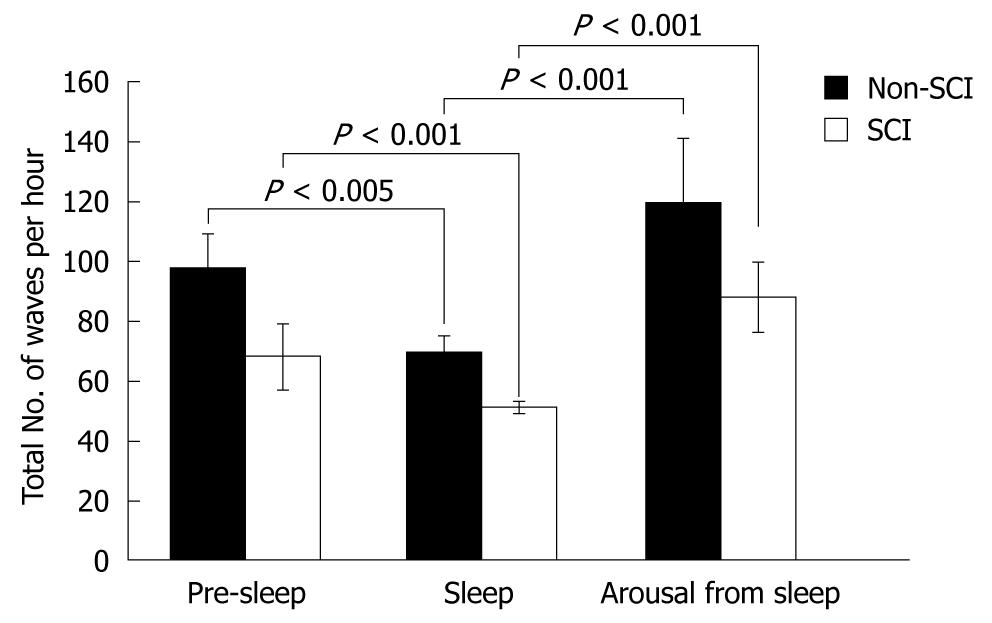Copyright
©2010 Baishideng Publishing Group Co.
World J Gastroenterol. Nov 21, 2010; 16(43): 5435-5439
Published online Nov 21, 2010. doi: 10.3748/wjg.v16.i43.5435
Published online Nov 21, 2010. doi: 10.3748/wjg.v16.i43.5435
Figure 1 Colonic motility index in relation to sleep.
In both the non-spinal cord injury (SCI) and SCI groups, colonic motility index (MI) was significantly suppressed during the sleep phase compared to the pre-sleep phase (Pre-sleep vs Sleep, Control: 8.8 ± 1.9 vs 2.1 ± 0.9, P < 0.005; SCI: 2.4 ± 0.4 vs 0.2 ± 0.05, P < 0.001) and significantly increased after awakening from sleep (Sleep vs Arousal, Control: 2.1 ± 0.9 vs 16.5 ± 4.5, P < 0.001; SCI: 0.2 ± 0.03 vs 4.3 ± 0.8, P < 0.001). The MI during the pre-sleep and post-sleep phases was significantly lower in SCI subjects than in the non-SCI (non-SCI vs SCI, pre-sleep: 8.8 ±1.9 vs 2.4 ± 0.4, bP < 0.01; post-sleep: 16.5 ± 4.5 vs 4.3 ± 0.8, aP < 0.05).
Figure 2 Total number of waves in relation to sleep.
In both the non-spinal cord injury (SCI) and SCI groups, the total number of waves was significantly suppressed during the sleep phase compared to the pre-sleep phase (Pre-sleep vs Sleep, non-SCI: 98 ± 11 vs 70 ± 5, P < 0.005; SCI: 68 ± 11 vs 51 ± 2, P < 0.001), and was significantly increased after awakening from sleep (Sleep vs Arousal, non-SCI: 70 ± 5 vs 120 ± 21, P < 0.001; SCI: 51 ± 2 vs 88 ± 12, P < 0.001).
- Citation: Ancha HR, Fajardo NR, Bauman WA, Rosman AS, Galea M, Creasey G, Korsten MA. Absence of high amplitude propagating contractions in subjects with chronic spinal cord injury. World J Gastroenterol 2010; 16(43): 5435-5439
- URL: https://www.wjgnet.com/1007-9327/full/v16/i43/5435.htm
- DOI: https://dx.doi.org/10.3748/wjg.v16.i43.5435










